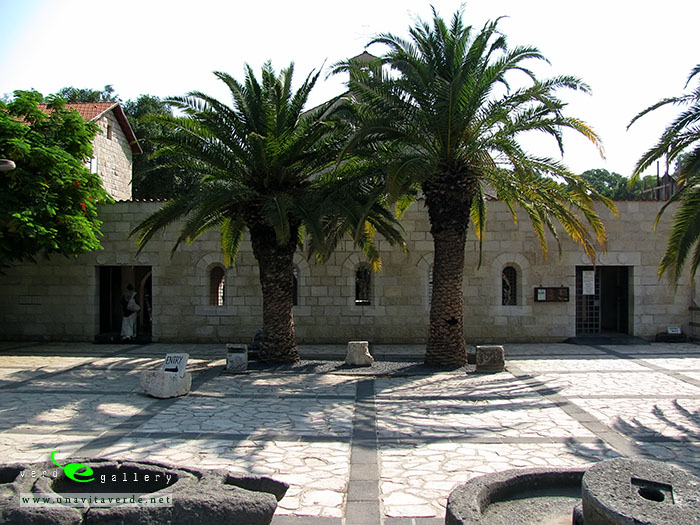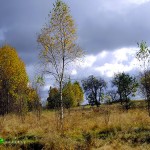Village of Tabgha, Israel
Today Tabgha (also spelled Tabhka) is village, but a small area on the northwest shore of the Sea of Galilee, not far from Capernaum. There lies the Church of the Multiplication of Loaves and Fishes, the traditional site of the food multiplication story found in all four gospels (Matthew 14:13-21, Mark 6:31-44, Luke 9:10-17, John 6:5-15). It is also where Jesus appeared to his disciples after his resurrection (John 21:1-17).
The church is most famous for a mosaic of loaves and fishes from the original mid-third century church. The church was expanded in the fifth century, but soon after destroyed by the Persians when they invaded in 614. The Byzantine structures and mosaics were excavated in the 1930s by a German team. In 1982, the current reconstruction was added. The original mosaics depict water birds and plants, ecology of the marshy swamps typical of the area historically.
The name Tabgha is a variation on its ancient Greek name, Heptapegon, meaning “seven springs.” Six of these springs have been identified in modern times, including one known as “Job’s Spring.”
This was probably the shrine described by the pilgrim Egeria at the end of the 4th century:
“In the same place facing the Sea of Galilee is a well watered land in which lush grasses grow, with numerous trees and palms. Nearby are seven springs which provide abundant water. In this fruitful garden Jesus fed five thousand people with five loaves of bread and two fish.”
This pictures have been taken on 27 of September, 2011.
This photo gallery is as Israel Travel Photo Guide.







